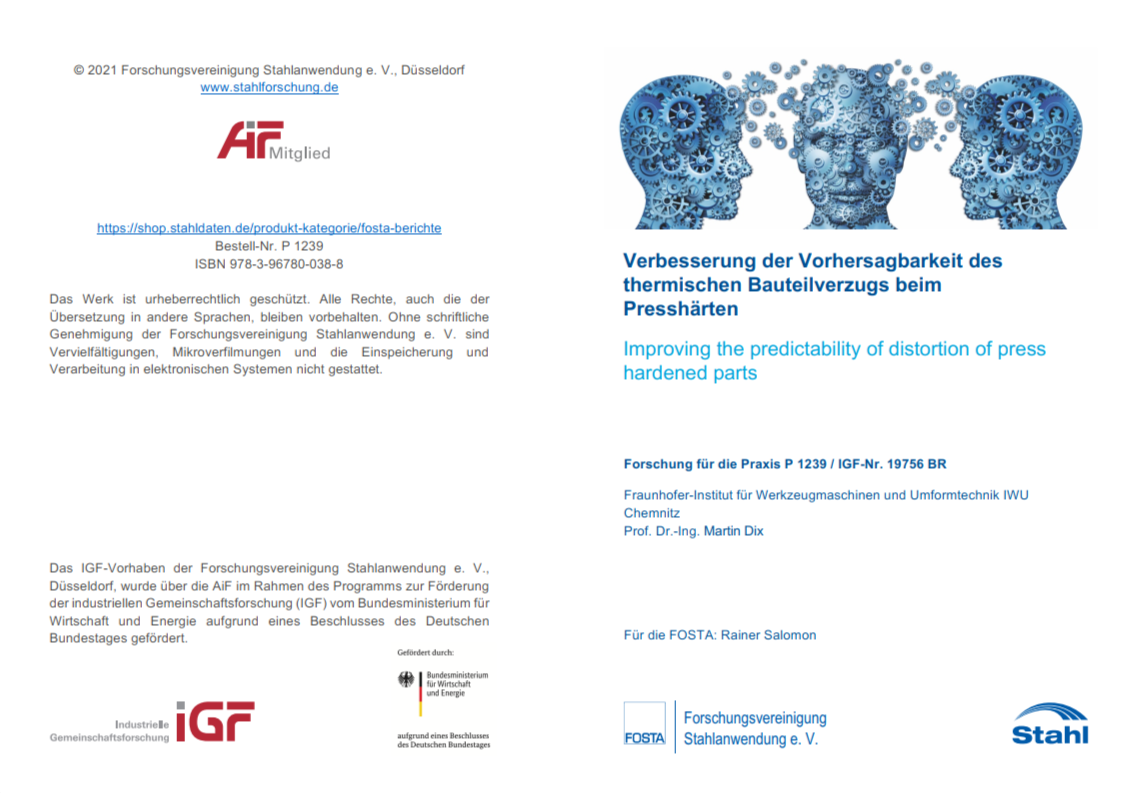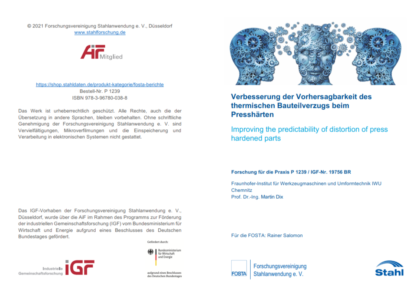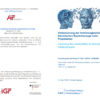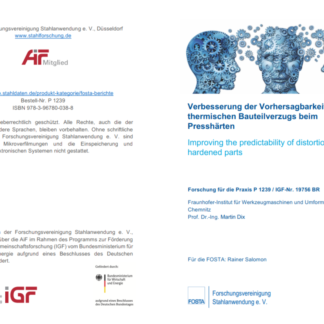Description
P 1239 – Improving the predictability of distortion of press hardened parts
A parameter study was conducted to determine the process parameters that have the greatest influence on the final hardness profile and part distortion of a C-section during graded press hardening. Three press hardening materials were studied for this purpose. Material A is the typical press hardening steel 22MnB5. Material B is a press hardening steel optimized for high energy absorption in case of crash. In addition, material C, a press hardening steel with increased carbon content, is investigated. To determine the influence of various process parameters, the furnace temperature and the holding time in the die were varied. As a result, material A produces parts with tailored component properties and a high hardness in the cooled region of the part.
The parameter variation does not lead to a significant influence on the hardness. In contrast, the hardness profile of material B in the cooled region is significantly influenced by the furnace temperature. Here, the higher furnace temperature causes a greater difference in hardness values between the cooled and heated regions. As expected, material C provides the highest hardness values, with the higher furnace temperature resulting in the highest hardness values. The geometric analysis shows the largest deviations in the flange of the heated area. A clear trend of how the furnace temperature and the holding time affect the geometric deviations cannot be seen. However, a clear deviation of the geometry between material C in relation to the other two materials is striking.
The thermal behaviour of the forming process is modelled by a detailed finite element (FE) analysis. Resulting from the local distribution of cooling rates, different material phase compositions and therefore mechanical properties arise. The typical hardness gradient of the tailored tempering process could be reproduced. After the removal of the part from the tool, a shape deviation is observed. The overall deflection consists of an elastic portion and a portion related to thermal shrinkage. The FE model does provide a suitable prediction for the localized shape deviation. A variation of process parameters did not result in a significant change in the distortion, at least within the observed parameter range.
Published in:
2021
Authors:
Prof. Dr.-Ing. M. Dix




